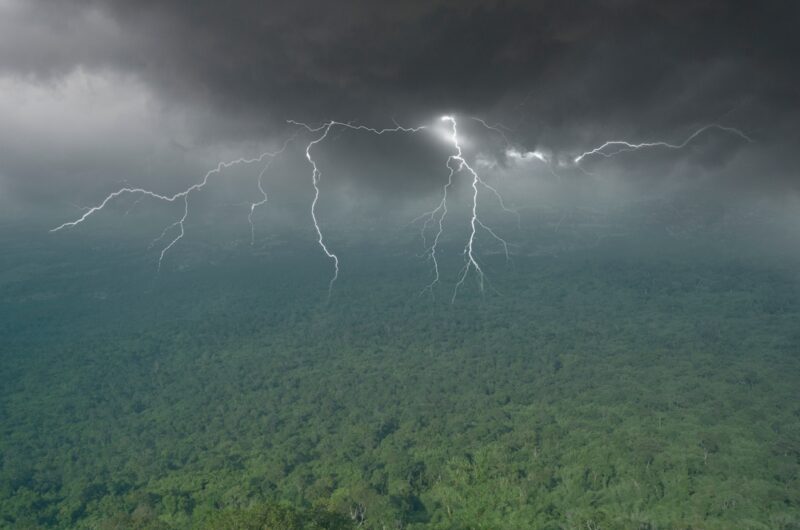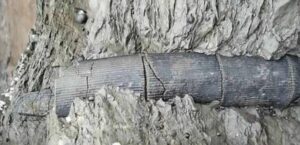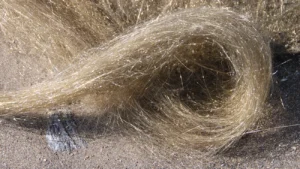In the rainforests of Panama, one tropical tree has evolved an incredible defence strategy. It can withstand lightning strikes and use them to fight off its competition.
Tonka bean trees, Dipteryx oleifera, are known for their hardwood and large, edible seeds. And they thrive if lightning strikes. For most plants, lightning is a death sentence. It kills hundreds of millions of trees every year. A single strike can boil sap, blast bark off trunks, and reduce a tree to splinters. However, Tonka bean trees come out unscathed, even though their height means they are hit more often.
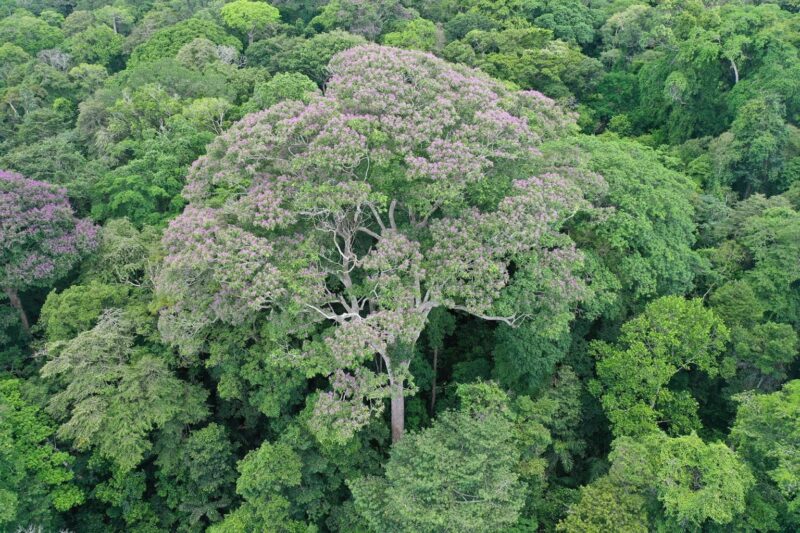
The Tonka bean tree. Photo: Evan Gora/Cary Institute of Ecosystem Studies
Transfers voltage like a wire
Instead of withering under the immense voltage, they have adapted to harnessing it. The trees act as biological lightning rods. Their incredibly high internal conductivity means that electrical current runs straight through them, as through a wire. As the voltage runs its course, it kills off the parasitic vines around it and many neighboring trees. In one case, when lightning struck a Tonka tree, its parasitic vines were blasted across the forest and killed a dozen other trees in the process.
For over a decade, researchers have studied the trees in Panama. “It became really apparent that lightning kills a lot of trees, especially very big trees,” Evan Gora, lead author of the new study, told Live Science. “But Dipteryx oleifera consistently showed no damage.”
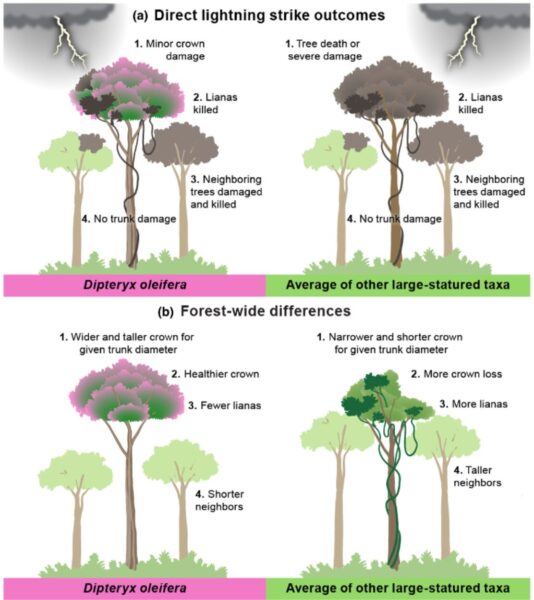
Infographic showing the impact of lightning strikes on Tonka bean trees compared to surrounding large trees. Image: Evan Gora et al., 2025
To understand what was going on, the researchers set up a series of electric field sensors and cameras to track lightning strikes in Panama’s Barro Colorado Nature Monument. The high-resolution detection system picked up the radio waves created by lightning. They combined this with ground surveys and drone footage to pinpoint the location of the lightning strike and monitor the trees in the area. In total, they tracked 93 lightning events. They also scoured over a decade’s worth of tree records.
A bad neighbor
Every Tonka bean tree hit showed little to no damage, but nearby plants were not so lucky. A single strike destroyed an average of 2,400kg of nearby tree biomass — the equivalent of approximately 9.2 trees and 78% of all the parasitic vines. It seems that growing next to a Tonka bean tree is one of the worst things you can do as a plant.
As lightning clears away the competition, the Tonka bean trees have more space and more light, allowing them to grow even taller. Researchers also estimate that a lightning hit causes the tree to produce 14 times more seeds than those that avoid the high-voltage bolts.
Researchers are now heading to rainforests in Africa and South East Asia to see if they can find any other trees that flourish when lightning hits.
